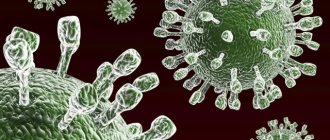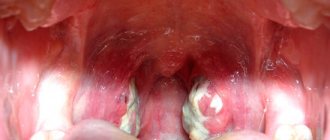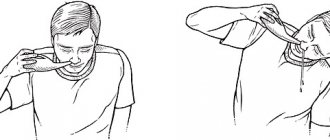Constipation is often called a disease of civilization. Symptoms of this deviation occur in people of any age category: adults, the elderly, children as young as one and a half years old, and even infants. Many people believe that it is not necessary to treat constipation in children and do without medical advice. Is this “inconvenient” disorder so harmless and what should you do if your baby’s potty remains empty for a long time?
Concept of constipation
Constipation in children
Constipation is a disorder of the intestines. It is accompanied by an increase in the intervals between acts of defecation in comparison with the physiological norm, which is considered optimal for a certain age category of a person. Constipation is also commonly referred to as insufficient bowel movements.
Constipation in adults most often occurs due to poor lifestyle and diet. As for children, everything is much more complicated here. Every parent should be especially attentive to the well-being of the child and his stool. Stool frequency, color and consistency can provide important information regarding the baby's condition and well-being. You should also pay attention to accompanying symptoms.
What is constipation?
Most people have no idea what constipation is. However, it is necessary to know the exact definition in order to distinguish pathology from the normal functioning of the gastrointestinal tract.
Constipation is considered slow, difficult or insufficient bowel movement, which is systematic. Is there any way to measure these indicators to give a more specific definition? Abnormal stool retention is considered to be bowel movements less than once every 48 or even 24 hours (depending on the age of the child). By “difficulty” we mean that the person makes an extra effort using the abdominal muscles and diaphragm to expel the contents of the intestines. Normally, defecation should occur daily, without strong pushing due to intestinal peristalsis.
In children under one or two years of age, bowel movements occur several times a day. This is due to the simple content of food, its light consistency, as well as the consumption of large amounts of liquid (mother's milk, water, compotes). At this age, constipation is characterized by difficult stools and hard consistency.
The causes of constipation are pathological and physiological (not associated with diseases). It is necessary to correct the process of defecation, since constipation disrupts the functioning of the gastrointestinal tract, promotes the accumulation of toxins, creates mechanical damage to the mucous membrane and causes other unpleasant conditions.
The modern pace of life among adults often causes inattention to their health and leaving such problems unattended. Also, many parents of children over 5 years old are not interested in the quality of their child’s bowel movements. Over time, the problem can only get worse. Treatment for constipation is quite simple and cheap, so doctors recommend that you do not hesitate to contact them for advice.
Constipation in a child: specific features and etiology
The phenomenon of constipation in children is more specific than in adults.
Constipation in an infant or a child over 1.5 years old differs significantly not only in the reasons for its origin, but also in its symptoms. Such intestinal dysfunction can often signal the presence of chronic diseases. Constipation in a child should be considered not only long intervals between bowel movements. Painful and excessively dense stools should also be a warning sign. Parents should be sure to be aware of how many times a week their child is required to go to the toilet.
Thus, infants most often have bowel movements as many times as they are fed. The number of bowel movements may vary depending on whether you are breastfeeding or bottle-feeding. In children over 2 years of age, stool becomes more shaped and acquires a dense structure. The number of bowel movements is rapidly decreasing. Thus, the child should have bowel movements at least once a day.
When does it make sense to suspect constipation in a child? The first signs can be seen in the following:
- the child complains of frequent abdominal pain, his behavior is restless when going to the toilet;
- the number of bowel movements is minimal (for a child under 3 years old - less than 6 times a week, for a child over 3 years old - less than 3 times a week);
- feces have too dense and dry structure;
- defecation occurs with great difficulty, the child strains;
- defecation is accompanied by pain.
If such a condition does not go away within a day or two, then there is a good reason to consult a doctor. Delaying a trip to the clinic can lead to chronic constipation, which in the future will significantly affect the quality and fullness of the child’s life.
First signs of constipation
When the process of defecation is difficult for a child, he tenses his abdominal muscles and pushes to help himself. At the same time, he may grunt or blush. This is especially noticeable in children who go to the potty. In older children, constipation can be suspected by sitting on the toilet for a long time. Often, the accumulation of hard feces in the intestines causes pain, which the child complains about to his parents. Here it is important to understand the true cause of the pain and not start treating with inappropriate medications.
Periodically inquire about the child's bowel movements if he goes to the toilet on his own. This way you can find out about the problem in time, as well as identify other symptoms that are manifested by disturbances in the functioning of the gastrointestinal tract.
Causes and risk factors
Constipation in a 2-year-old child, like constipation in a 7-year-old child, occurs due to a disorder of intestinal motility and the work of a coordinated group of pelvic floor muscles. A variety of reasons lead to the occurrence of this condition, including the following:
- Photo: Causes of constipation in children
are organic changes; - eating disorders;
- dental diseases;
- gastrointestinal diseases;
- taking certain medications;
- introduction of complementary foods (children under 1 year);
- presence of chronic diseases;
- dehydration;
- psychological factors;
- congenital intestinal anomalies;
- ingestion of a foreign object;
- use of artificial formula for feeding.
Constipation in infants is considered the most dangerous. Most often, this condition is caused by improper feeding, which does not allow nutrients to be absorbed correctly and evenly. A sharp lack of plant fiber can also provoke the development of constipation.
Parents with emotional and impressionable children need to be careful. Constipation in a 3 or 4 year old child may occur during potty training. Coercion and excessive imposition of incorrect motivation by parents can form a strong psychological belief in the child that going to the toilet is bad.
Over time, this problem can become more than serious. The child may deliberately delay the act of defecation, which over time will lead to loss of sensitivity of the rectum, and then to chronic constipation.
Causes of constipation
The causes of constipation can be very diverse. Knowing them, parents can independently determine why their child has such a disorder. In 99% of cases, the problem is not a serious abnormality and can be resolved with lifestyle changes or over-the-counter medications.
Constipation can be of the following types:
- Organic. Rarely are the real cause of constipation. Organic causes include congenital anomalies of the intestine - structural disorders or failures in the innervation of the organ. The problem is detected immediately after birth and manifests itself acutely. As a rule, such patients require urgent treatment, after which the cause is eliminated and the constipation itself disappears. In some cases, organic constipation is acquired during life. This is possible when a mechanical obstacle forms in the intestine - a tumor, a polyp.
- Functional. One of the most common types. The mechanism of its occurrence is a disruption of the intestines due to the influence of endogenous or exogenous factors on it. Damage to the mucous membrane or decreased tone of the muscle layer disrupts the process of normal emptying. Functional constipation occurs due to:
- Poor nutrition. This can be either a predominance of fatty and protein foods, or insufficient fluid intake, which makes the stool dry and hard. To avoid this, the main diet should consist of vegetables and foods containing fiber. When drinking, preference should be given to water, since lemonades and juices (especially store-bought ones) are considered harmful to health.
- Dysbacteriosis. An imbalance in the intestinal microflora leads to disruption of its functioning, activation of pathogenic bacteria and problems with the absorption of nutrients and water. Putrefactive processes that develop in parallel with this impair intestinal motility and provoke constipation.
- Food allergies. The release of biologically active substances during an allergic reaction leads to damage to the intestinal walls and deterioration of its peristalsis.
- Enzyme deficiency. Enzyme deficiency or diseases of other organs of the digestive tract lead to incomplete digestion of food and the formation of feces, which are difficult to pass.
- Helminthiasis. Infection with parasites provokes disturbances in the functioning of many organs, as well as a deterioration in the general condition of the patient. In this case, the gastrointestinal tract is the first to be affected, where helminths attach and cause mechanical damage to the walls.
- Rakhita. The disease is accompanied by impaired muscle tone, including those located in the intestinal walls.
- Anemia or iron deficiency. The result of this deficiency is poor oxygen transfer to the tissues. Intestinal hypoxia negatively affects its contractility.
- Disorders of the nervous system or thyroid gland.
- Frequent use of means for emptying - enemas, gas tubes, synthetic laxatives. The intestinal wall gets used to stronger stimulation and becomes unable to get rid of feces on its own.
- Psychological constipation. The nervous system regulates the functioning of all internal organs. Muscles contract after conducting a nerve impulse and sending a signal from the brain. When innervation is disrupted, the motility of the gastrointestinal tract slows down, which leads to constipation and delayed emptying. Such constipation is included in a separate group due to a different approach to treatment tactics.
Psychological constipation often appears during the period of adaptation to kindergarten or during primary school age. When a sufficient amount of feces accumulates in the intestines, they irritate the nerve endings of the organ and the child has an urge to go to the toilet. When this feeling is suppressed (in class or during quiet time), the feces continue to accumulate and thicken. Defecation in this case occurs with injury to the mucous membrane and painful sensations.
There are also transient constipation - those that occur once and are not a consequence of systemic disorders. Their reasons may be:
- Errors in nutrition - consumption of foods with fixing properties.
- acute infectious disease - an increase in temperature can cause dehydration and hardening of stool.
Such disorders are easily restored by replenishing the amount of fluid in the body or after the cessation of the underlying cause.
Symptoms
Constipation in children is not just the absence of bowel movements for several days. This condition is manifested by a number of symptoms. They are typical for both infants and older children:
Poor appetite due to constipation in a child
- dense and dry feces;
- smearing - characteristic marks remain on the child’s underwear;
- blood in stool, on underwear, on toilet paper;
- stomach ache;
- lack of appetite;
- malaise;
- anxiety.
Frequent constipation indicates problems with the gastrointestinal tract. Parents should first of all pay attention to the child’s well-being. If, in addition to constipation, the symptoms include nausea, fever, vomiting, then the baby needs a qualified specialist.
Drug treatment
For constipation in children, treatment should be carried out after taking the necessary tests by a doctor. You cannot decide on your own which drug to choose, since laxatives can be addictive. In addition, their use is characterized by a number of possible side effects: the development of allergic reactions, the occurrence of drug-induced diarrhea, etc.
Children under three years of age are allowed to use drugs containing lactulose. These medications include Duphalac and its analogues.
To increase muscle tone and eliminate spasms, drugs of two categories are used: prokinetics and antispasmodics. Domperidone is a prokinetic drug. The most common antispasmodics are No-shpa, Papaverine.
Children who experience constant constipation can also be prescribed herbal-based choleretic drugs, for example, Chofitol. Drugs in this group are intended to normalize the level of digestive juices through the production of bile and pancreatic secretions. Under their influence, food is digested more quickly and its residues are eliminated.
For dysbacteriosis and disturbed microflora, preparations with bifidobacteria and lactobacilli are used. These are products such as Linex, Hilak Forte, etc.
Types of constipation in children
In medicine, there are several types of constipation in children. They have their own characteristics, as well as an individual approach to treatment.
- functional - this type of disorder is typical for infants. It appears due to disruption of the colon.
- organic - occurs with congenital genetic abnormalities of the large intestine. Dysfunction can be detected almost immediately, since the baby is most often not able to empty the intestines on his own.
- acute - represents a sudden delay in bowel movements. It can occur due to a change in the type of food, a change in climate zone, or the environment. The problem may also appear due to psychological discomfort or after taking certain medications. This type of constipation usually goes away on its own without requiring additional medical intervention.
- false - occurs mainly in infants. The disorder is associated with increased absorption of breast milk and infant formula. The dysfunction goes away on its own after normalization of nutrition.
- episodic - can be observed as an additional disorder in another disease, which is accompanied by an increase in temperature, which leads to dehydration and malfunction of the intestines.
- chronic - characterized by episodic stool retention. Periodically, the child suffers from difficult stools in the form of dry and dehydrated feces.
When choosing treatment for constipation, it is necessary to take into account absolutely all the characteristics of the baby: his age, state of health, as well as the presence or absence of chronic ailments.
Consequences
Regardless of the reason for constipation, action must be taken urgently. Why is constipation dangerous in children? It causes disruption in the gastrointestinal tract and has a negative effect on the body. As a result, the following consequences of constipation in children are possible:
- improper processing of food is fraught with impaired absorption of nutrients by the intestinal walls, which causes anemia and weakness;
- at the same time, decay products are not excreted, but are carried through the blood throughout the body, leading to intoxication. The main signs of intoxication include: lethargy, drowsiness, loss of appetite;
- due to fecal retention in the intestines, the balance of microflora is disturbed, which reduces immunity;
- accumulation of feces causes stretching of the intestinal walls, further complicating the situation with cleansing the body, as well as provoking inflammatory processes, pain, flatulence, and poor circulation;
- chronic forms cause anal fissures and bleeding. The result is a risk of neurological problems.
Such problems occur quite often in children. You should not panic when faced with them, especially since you already know effective ways to get rid of bowel dysfunction.
How to treat constipation in children
Photo: How to help a child with constipation
Before you start treating your baby, you need to provide him with first aid. This applies to infants. First aid measures for a baby are as follows:
- If the child is restless and does not defecate for a long time, you should pick him up more often and gently massage the abdomen each time.
- An emergency measure is suppositories for constipation, intended for the treatment of newborns. If you still need suppositories, it is better to opt for suppositories with glycerin.
- Sometimes the only emergency method is an oil enema. It is better to first consult with a doctor about the advisability of its use.
- If it’s time to wean your child off the breast, you shouldn’t do it abruptly. This needs to be done very gradually, and to replace milk you need to choose mixtures with bifidobacteria and probiotics.
As for the treatment of older children, it is appropriate to use some drugs. Among them:
- Duphalac;
- Lactusan;
- Normaze;
- Prelax et al.
These drugs are widely used by pediatricians to treat constipation in children of all ages. This is explained by their safety for the health of children and their lasting effect. The dose is developed by doctors individually for each child. Also, these drugs are not addictive, so they can be used for a long time if the child suffers from chronic constipation.
Folk remedies
Constipation in a 3-year-old child can be treated with non-native remedies.
Below we will describe what to do to achieve a positive result at home:
- Dill water. For 1 stack. Take 3 tsp of water. ground dill. You need to boil the water, then add the plant to it, cook for 2-3 minutes. Let cool to room temperature, strain. Drink 1 tbsp. for the reception.
- Kefir with butter. To 100 ml of kefir you need to add 3 tsp. olive oil. After breakfast, the child should drink the mixture. The effect of the folk remedy occurs within 40-6 minutes.
- Figs with prunes. Place 100 g of dry figs and prunes in a container, pour 600 ml of plain water. Cook until half the water has evaporated. Give the baby a decoction to drink throughout the day. The next morning, let him eat the remaining grounds.
There is a huge list of recipes for alternative treatments for constipation in children. Which one to choose depends on the parents and the children’s tolerance to certain ingredients.
What dangers does constipation pose?
Constipation is dangerous for all children, whether a child is 2 or 6 years old. Regardless of this factor, the child may suffer greatly. However, the younger the baby, the more dangerous constipation is for him. A child can be affected by a lot of negative factors, including:
- constipation disrupts the motility of the entire digestive tract, which can cause nausea and vomiting, and then dehydration;
- constipation contributes to the accumulation of toxic substances in the body and their absorption into the blood, which can poison the baby;
- with prolonged constipation in a child, the stool becomes very hard, which can lead to cracks and even tears in the rectal mucosa; over time, the child may even develop a fear of defecation.
Help for a child must be urgent. If a change in diet does not help in a short time, the baby should be taken to a doctor and examined to identify the root cause of the disease.
Nutrition
Constipation in adolescents, adults and children requires dietary changes. Diet is the key point of treatment. It is difficult for children to adapt to a new diet, so experts recommend changing the diet of the whole family.
Causes and treatment are related to diet. To save your baby from illness, you must follow the following recommendations:
| Taken measures | Products |
| Avoiding foods that cause stool hardening | baked goods, pasta, rice, bananas, peeled apples |
| Avoiding foods that cause flatulence | cabbage, legumes, tomatoes, mushrooms |
| Elimination of foods that lead to decreased peristalsis | jelly, chocolate, blueberries, cocoa, coffee |
| Transit of feces is ensured by their formation in sufficient volume. Therefore, the bulk of dishes in the diet should be represented by coarse fiber. | fruits, vegetables, cereals |
| Fermented milk products | yogurt, kefir |
Compliance with the drinking regime is mandatory. You should drink clean, still water. Therefore, in such situations, the first thing they do if the baby has a similar problem is to teach him to drink water, since soups and other liquids are perceived by the body as food. If there are inflammatory processes in the intestines, a special diet is required (No. 3 or 4).
How to protect your child from constipation
The effect of constipation on a child
An important aspect of a child’s overall health is the attentiveness of his parents. It is an attentive attitude to all changes in the child’s condition that can protect him from such ailments as constipation. Timely assistance provided to the baby can significantly improve his well-being and relieve him from the complications of constipation, abdominal pain and colic.
The key to proper functioning of the intestines of a child of any age is compliance with the rules of nutrition, sufficient activity, and compliance with the daily routine. Parents should closely monitor all this.
Diet
When parents do not know what to do with prolonged constipation in children, it is worth taking care of their nutrition. The diet varies depending on the age of the little patient. So, if constipation plagues an infant whose mother is breastfeeding, then it is the mother who will have to follow the diet. Mom's diet should include:
- Vegetables and fruits;
- Light soups;
- Porridge;
- Dairy products;
- Lean meats and fish.
If constipation occurs in a child from 2 to 7 years old, then the diet should consist of the following dishes and products:
- The vinaigrette;
- Salads;
- Vegetable dishes;
- Dairy products;
- Soups;
- Fruit juices.
Dairy products for constipation in a child
You can give fish and poultry, and cottage cheese and other fermented milk fruits can be sweetened with sugar or honey. Fermented milk products taken before bedtime can have a particularly good effect. Constipation usually goes away in the morning. Among other recommendations, in addition to nutrition, it is worth noting adherence to sleep and rest, sufficient physical activity, as well as the possibility of using some traditional methods of therapy.
Speaking about feeding a child, it is worth knowing the list of foods that should never be given to children suffering from constipation. Among them:
- White bread;
- Semolina and rice porridge;
- Strong coffee, tea, jelly and cocoa;
- Garlic, onion, radish;
- Pasta and noodles;
- Protein and fatty foods.
Lifestyle adjustments
His health also depends on the child’s lifestyle. Many parents think that this element has no effect on the baby’s stool, but this is not at all the case. A sedentary lifestyle, which a child maintains by watching cartoons or playing computer games, negatively affects intestinal motility. The fight against frequent constipation should begin with the physical activity of the little patient.
Breakfast
Another important element is diet. If the child’s body gets used to receiving food at the same time of day every day, then the baby’s digestive system will begin to digest foods better, and, therefore, function better. And of course, we should not forget that the child’s digestive system is more vulnerable. This means that you need to feed him the lightest and healthiest food possible.
And of course, one of the most important points is the mode of activity and rest. A child, starting from 3 years old, should already have an established sleep pattern. So, when the child’s body gets used to living according to the regime, digestion will improve, and the baby will defecate like clockwork.
The effectiveness of folk remedies in the fight against constipation in children
When trying to help a child with constipation, it is worth remembering that not all methods are equally good. Quite often they try to relieve constipation in children using traditional methods. This is explained by their proven and natural nature. There are also cases when children cannot be helped with medications - taking them is simply impossible. It is in such situations that doctors recommend some methods of traditional therapy.
- The child should be given more clean water. At the same time, other drinks, be it milk, juices or teas, are not at all useful in the fight against constipation.
- Boiled vegetables will help your baby fight constipation. You can feed your child boiled carrots and beet.
- Eating fruit can also help relieve constipation. In this case, the result from taking prunes is especially good.
Children can also be given tea. Only the brewing should not be traditional. Instead, you can use a healthy decoction of raspberry and fig leaves. Fermented milk products, such as kefir, drunk before bed will also help greatly.
Principles of treatment
Before starting treatment for constipation, you should visit a gastroenterologist. The doctor will conduct the necessary laboratory and instrumental research methods, then prescribe individual therapy.
Treatment of constipation during puberty should be comprehensive and aimed at softening and removing stool, as well as preventing the development of the condition in the future.
Diet as the key to recovery
Diet correction includes changing the nature and diet of a teenager. The diet should consist of vegetables and fruits high in dietary fiber to stimulate intestinal motor function. Products entering the gastrointestinal tract are recommended to be subjected to thermal and mechanical processing. The frequency of meals will also help reduce the load on the intestines; it should be increased to 5-6 times a day.
Products that help increase intestinal motility:
- Wholemeal bread with bran;
- Fermented milk products;
- Raw vegetables and fruits;
- Loose porridges;
- Sea kale;
- Greens, especially dill;
- Cold fruit juice.
Foods that reduce motor activity:
- Bread and other baked goods made from white flour;
- Chocolate products;
- Fatty meats;
- Legumes;
- Smoked products;
- Canned food;
- Fast food;
- Chips, crackers;
- Carbonated drinks with dyes.
To prevent the formation of dry feces, you need to drink a sufficient amount of liquid in the form of alkaline mineral waters without gas, cold.
Physical activity
To improve the functioning of the digestive tract, it is necessary to increase physical activity. The exercises are aimed at strengthening the muscles of the abdominal wall. The optimal ones for strengthening motor skills are:
- Raising the body from a lying position;
- Exercise “bicycle”, in which only the legs are raised;
- In a supine position, press your legs to your chest, performing rolls;
- Alternately straightening the legs while kneeling;
- Squats with legs parallel.
Before performing the treatment complex, it is necessary to consult a doctor to determine the individual load, since intense sports are contraindicated in case of cardiovascular diseases.
Therapeutic enemas
To strengthen the natural urge to defecate, it is recommended to conduct a course of training enemas, but only after consulting a doctor. Before eating breakfast, the child is given a cool liquid to drink, then he eats food. After eating, a cleansing enema is done with water at room temperature. The volume of injected liquid is up to 150 ml. Glycerin suppositories are also used to quickly cleanse the intestines.
Drug treatment
The use of laxatives is necessary if there is no effect from diet therapy. When selecting a laxative, the individual characteristics of the teenager’s body are taken into account, since inadequate selection of medications can have a negative effect on the gastrointestinal tract.
In the treatment of constipation, agents are used that enhance intestinal motility and peristalsis. First of all, laxatives are used, which promote bowel movements by increasing the contraction of its walls.
The most prescribed medications are the following groups of drugs:
- Saline laxative. They retain fluid in the intestines, increasing osmotic pressure. The mechanism of action is to soften stool. (Glauber's salt, Magnesium sulfate, Normaze);
- Increased stool volume. Act in the small intestine, increasing the activity of beneficial microorganisms. (“Lactulose”, “Sorbitol”, “Macrogol”);
- Emollients. Stimulate the transit of intestinal contents due to increased peristaltic contractions. (Vaseline oil, Norgalax, Proctosedyl).
Constipation during puberty is a rather delicate problem, so parents need to make efforts to help normalize the functioning of their child’s digestive tract.
Disease prevention
It must be remembered that the main causes of problems with stool are poor nutrition and a passive lifestyle. Therefore, you need to watch your diet and eat more fruits and vegetables. It is also recommended to exclude harmful foods: smoked foods, sweets, fatty, spicy and salty foods.
An important point in the prevention of constipation remains an active lifestyle (walking in the fresh air, stretching, sedentary work). It is necessary to follow a diet, as well as empty the intestines on time, without delaying until later.
It is also worth noting that the symptoms of the disease cannot be ignored. It is important to consult a doctor at the first appearance of unpleasant signs. If the diagnosis is confirmed, you can treat at home, but you should not overuse self-medication without consulting a specialist.
lechim-prosto.ru
Diagnosis of pathology
Frequent difficulties with bowel movements should not be ignored. But before starting treatment, it is worth undergoing an examination. This is necessary in order to exclude or confirm the presence of other diseases that could cause constipation.
A set of measures that are necessary when diagnosing pathology:
- a thorough examination by a proctologist or gastroenterologist (if constipation occurs in men);
- examination by a gynecologist (for stool retention in women);
- conducting an X-ray examination by filling the intestines with a special liquid of a contrasting color (irrigoscopy - done through an enema);
- colonoscopy examination - insertion of a special instrument into the anus for a detailed examination of the rectum.
There are situations when additional measures are required to make a diagnosis:
- donation of feces;
- undergoing an ultrasound (examination of the abdominal organs);
- checking colon motility;
- examination by an endocrinologist, therapist or neurologist.
Additional examination options may be required if there is a suspicion of the presence of tumors in the pelvic organs and rectum. This also includes cases where constipation is caused by nervous disorders or other diseases that are not related to the intestines.
Important! A comprehensive diagnosis will help not only identify the cause of constipation, but will also make it possible to decide on treatment.
Reasons for rejection
During adolescence, stool retention is common. The reasons may be different. Experts distinguish two conventional types of constipation in adolescents:
- physiological;
- pathological.
Depending on the cause of the pathology, the doctor determines the nature of the disease and the treatment regimen.
Physiological reasons
This type of constipation can cause:
- hormonal imbalance – a number of hormones, the amount of which increases during puberty, can cause fecal retention;
- physical inactivity – reduced physical activity leads to weakening of the muscles of the whole body, including intestinal muscle tissue;
- improper diet - most teenagers do not eat according to the schedule and often eat fast food, which results in inflammation of the gastrointestinal tract;
- stress – the emotional background of a teenager is unstable, strong susceptibility to situations affects the functioning of the intestinal tract;
Eating fast food can cause constipation
- bad habits - teenagers aged 13-14 years show interest in cigarettes and alcohol, bad habits also lead to deviations in the functionality of the gastrointestinal tract;
- the beginning of menstruation - during the first menstrual cycle, changes occur in the genital organs of girls, one of which is the natural relaxation of the muscles of the pelvis and intestines.
Changes in a child's body during puberty and an unhealthy lifestyle are the most common causes of constipation in teenage children.
Possible pathologies
Prolonged stool retention in a child aged 13 to 15 years may not be a consequence of natural changes, but a symptom of a serious illness.
Constipation can also occur due to an abnormal structure of the colon.
Pathological causes of constipation in adolescents:
- stomach ulcer or gastritis;
- anatomical deformation of the colon;
- bowel irritation;
- diseases of the central nervous system;
- colitis or enteritis.
The greatest danger is posed by intestinal tumors, which can also occur in children under the influence of provoking factors (bad habits, poor diet, etc.).
Nutrition adjustments
Yet the main cause of constipation remains poor nutrition. It is necessary to adjust the diet, and, most likely, the problem will disappear. What should be included in a teenager’s menu for normal bowel movements:
- seasonal fruits;
- berries;
- raw and thermally processed vegetables;
- vegetable oil;
- melons (watermelons and melons);
- grain and bran bread;
- fermented milk products (kefir, yogurt, yogurt);
- soups;
- oatmeal, corn and pearl barley porridge.
Here's what you need to minimize in your diet:
- flour products (buns, pies, white bread);
- sweets (with the exception of dark chocolate);
- rice;
- cocoa and coffee;
- fried and canned foods.
Constipation in children aged 13 is also caused by a lack of fluid. You need to drink up to 2 liters of water, unsweetened tea and compote. You also need to remember to eat regularly. A teenager should not eat a couple of times a day (especially once) and eat until his stomach is bloated. Meals should be medium portions 4-5 times a day, including snacks with yogurt or fruit. Carefully monitor your girls' diet. At this age, they tend to believe that it is time to lose weight, even with normal body weight. Special diets at this age threaten not only constipation, but also other eating disorders.
Treatment of functional constipation
We are convinced that functional constipation is a lot of inconvenience, problems with appetite and some other symptoms. A priori, such phenomena can lead to prolapse of the rectum, self-infection of the small intestine, as well as the tissues that make up the rectum itself and surrounding it.
It is unknown which bacteria can cause secondary disease. The rectum normally contains both aerobic and anaerobic bacteria.
When treating functional constipation, you need to pay attention to the reasons that caused it (if any can be determined), the type of motor impairment, as well as the severity of the symptoms.
Many patients achieve results using nonspecific treatment methods.
Non-traditional methods of treating the intestines include dietary recommendations. It is generally accepted that foods that contain fiber and nutritional supplements help well in the treatment of functional constipation.
Another option is to stimulate the receptors in the gut lining with particulate matter. It is appropriate to recommend that adults and children include foods that contain indigestible fiber in their diet.
If there is no effect from changing the diet, the need to use laxatives arises. First of all, laxatives are used, which increase the volume of stool.
An example of this group is mucofalk.
Hydrophilic fibers located on the outer shell of plantain seeds, which are part of the drug, can hold water around them in an amount many times greater than their own weight. With this, the stool becomes softer and increases its volume.
In this case, mukofalk normalizes intestinal function without causing irritation; the drug is not absorbed by the body and is not addictive.
Diagnostic methods
A pediatrician, gastroenterologist and proctologist are involved in the treatment and diagnosis of constipation in a child. First, the doctor performs a visual examination. During this procedure, the specialist may detect unnatural bloating and the presence of fecal stones. Also, during palpation, the doctor assesses the condition of the intestine and excludes or, conversely, identifies malformations of its development. Laboratory and instrumental diagnostics may include the following items:
- stool examination for helminthiasis, dysbacteriosis and an extended coprogram;
- blood analysis;
- ultrasonography;
- Ultrasound;
- esophagogastroduodenoscopy (endoscopic examination of the digestive organs);
- x-ray of the peritoneum;
- colonoscopy;
- irrigography.
Often, children suffering from constipation develop neurological disorders. In such cases, the small patient is sent for a consultation with a neurologist and studies such as EEG (electroencephalography) and echoencephalography are prescribed.
Laxatives in the treatment of constipation
Drugs that promote bowel movement should be selected carefully, taking into account the individual tolerance of each person. It is also not recommended to take laxatives frequently; it is addictive and reduces the natural urge to go to the toilet.
If difficulties with bowel movements occur due to poor nutrition, taking medications is prohibited. It is worthwhile to improve bowel movements by adjusting your diet.
If frequent and prolonged constipation is observed, treatment with synthetic drugs (Gutalax, Bisacodyl, Regulax) is prescribed. They act on the receptors of the rectum and stimulate its peristalsis. You should take these medications for no more than 2 weeks. Otherwise, the sensitivity of the organ is impaired and the urge weakens. Such drugs are contraindicated for pregnant, lactating women and infants.
There are osmotic medications that are based on magnesium hydroxide and citrate (Forlax). The effects of such drugs are not addictive, but they only remove the symptoms and do not treat the causes. Long-term use of such laxatives is not recommended, as it can lead to the excretion of sodium and potassium salts from the body, which is very dangerous for heart failure in older people.
Prebiotics are good laxatives. They cause almost no side effects (sometimes flatulence for several hours). These include: Duphalac, Prelax and Lactusan. Such drugs can also be taken in old age.
Important! Long-term use of laxatives can cause intense diarrhea, itching in the anus, intestinal obstruction, vomiting, and various skin rashes. You should carefully follow the instructions and not abuse the products.
To ease stool during pregnancy, women are prescribed glycerin suppositories. They irritate the colon well, gently acting on its receptors. The peculiarity of such suppositories is that they do not affect the tone of the uterus and do not harm pregnancy.
Causes and symptoms
In adolescence, the causes and therapeutic treatment of periodic and chronic constipation can be different.
In order to identify the source of the disease, you need to contact a gastroenterologist. After the examination, the doctor will be able to make an accurate diagnosis and select the appropriate treatment and diet. Main causes of constipation:
- lack of regular nutrition;
- eating junk food;
- anemia;
- antibiotic treatment;
- disruption of the thyroid gland;
- lack of physical activity;
- emotional stress.
Constipation in adolescence manifests itself in the same way as in adults - the stomach hurts, irritability and aggression appear.
Various diseases can also affect bowel movements:
- hypercalcemia;
- dysbacteriosis;
- hypothyroidism;
- diabetes mellitus and others.
The main symptoms of constipation in a teenager:
- painful stomach;
- flatulence;
- loss of appetite;
- nausea, vomiting;
- bad feeling;
- abdominal cramps;
- dry, pea-shaped stool;
- bloating.
How to do an enema for constipation?
Although enemas for constipation are now prescribed quite rarely (since they only perform a one-time cleansing of the intestines), many are interested in how to do an enema for constipation and what kind of enema to do for constipation?
Let's start with the fact that doing an enema more often than once a week is contraindicated.
The enema should be large (800-1000 ml), or you need to use a special enema - an Esmarch mug. Drinking or boiled water at body temperature (approximately +37°C) is taken, drawn into the enema bottle and slowly introduced through the anus into the intestines. After this procedure, you should lie down on your side for a while, and if you feel the urge to defecate, immediately go to the toilet...
What exercises to do for constipation?
If you are constipated, it is good to move more. You can perform simple exercises - standing or lying down.
Standing straight (legs together, hands on your belt), you need to tilt your torso to the right and left (10-12 times), and then forward and backward. Without changing your position, do deep squats, lifting your heels off the floor.
The next exercise for constipation should be done while lying on your back. Legs should be bent at the knees, raised up and perform a “bicycle” movement for 20-30 seconds.
Without changing the starting position (lying on your back), bend your right leg at the knee, clasp it with both hands and press it to your stomach. Return to the starting position and do the same with your left foot. The number of repetitions is 10 times with each leg.
Here's another useful exercise. You need to kneel down, bend forward, lower your head and rest your hands on the floor with the palms of your straight arms, and then do squats on your buttocks - right and left (10 times in each direction).
Disruption of intestinal activity with stool retention - constipation - negatively affects the functioning of other systems and organs. Untimely emptying of the intestines interferes with normal metabolism, and if you don’t know what to do with constipation, it can lead to self-poisoning of the body.
ilive.com.ua
What to do for constipation during pregnancy?
Many women experience difficulty defecating before menstruation and during pregnancy.
First, you need to avoid foods that increase the likelihood of bowel problems. Secondly, do not drink any herbal teas or tablets that contain the medicinal plant senna. Sena drugs - Senade, Sennalax, Trisasen, Glaxenna - have a teratogenic effect.
Most gynecologists advise pregnant women to do without laxatives, although constipation during pregnancy is often hormonal in nature and cannot be avoided. Foods that contain enough fiber help relieve constipation (read above). Eat prunes and dried apricots, cabbage and oatmeal. But buns, chocolates, pasta and barbecue will only worsen the situation. If you eat a salad of fresh vegetables (with vegetable oil) for breakfast, and drink a glass of one-day-old kefir before going to bed, then you can cope with constipation without a pharmacy.
Flax seeds and flaxseed oil help. The daily dose of flaxseed is one teaspoon (with 200 ml of water), and the oil (a dessert spoon per day) is recommended to be consumed in the evening. You can prepare oatmeal broth: pour 250 g of oat grains with water (so that the water barely covers them) and cook over low heat for about a quarter of an hour. The resulting decoction should be filtered and taken half a glass three times a day.
In first place among pharmacological agents are laxative rectal suppositories with glycerin and Norgalax suppositories (dose - one suppository during the day). Preparations with lactulose are also used (details about them are written above). Normaze or Duphalac should be taken in the morning, the daily dose is no more than 20 ml.
Constipation before menstruation is associated with the production of hormones by the corpus luteum of the ovaries before the onset of menstruation. In principle, it is short-lived and goes away on its own.
Constipation during pregnancy
Quite often, constipation occurs in women during pregnancy.
Causes of difficult bowel movements during pregnancy:
- Pressure on the intestines from the enlarging uterus. During this period, stagnation occurs in the vessels and veins due to poor circulation in the pelvic organs, and peristalsis is weakened.
- Reduced sensitivity of the intestinal muscles to stimulants produced by the body. This is explained by the fact that the intestines and uterus are closely connected and have a common innervation. If intense contraction of the walls of the rectum begins, stimulation of the uterus will begin, and there will be a threat of premature birth. Therefore, intestinal sensitivity is weakened.
- Suspiciousness and fears during pregnancy. Excessive stress negatively affects bowel function.
It is worth noting that after childbirth, the percentage of women suffering from constipation decreases significantly.
Important! If, after long and unsuccessful attempts to go to the toilet, a person develops pain in the lower abdomen (on the left), and the temperature rises, this may be a harbinger of diverticulitis (inflammation of the inner layer of the large intestine). In advanced stages, the disease can cause a dangerous complication – peritonitis.
Prevention
The occurrence of constipation is influenced by the amount of intestinal contents, which depends on a person’s diet. Difficult to digest foods contain water and salts that pass through the intestinal wall. Eating foods rich in dietary fiber will lead to an increase in the volume of stool and stimulation of intestinal activity.
Prevention of functional constipation involves an active lifestyle. Monitor the rules of daily visiting the toilet at the same time after meals (preferably after breakfast), and always treat diseases that cause constipation in a timely manner.
Lying in bed for a long time in the morning is not acceptable.










